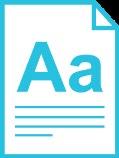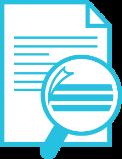Grade 10 • Study Guide
English Home Language: Language
Owned and published by Optimi, a division of Optimi Central Services (Pty) Ltd.
7 Impala Avenue, Doringkloof, Centurion, 0157 info@optimi.co.za www.optimi.co.za
© Optimi
Apart from any fair dealing for the purpose of research, criticism or review as permitted in terms of the Copyright Act, no part of this publication may be reproduced, distributed, or transmitted in any form or by any means, electronic or mechanical, including photocopying, recording, or any information storage and retrieval system without prior written permission from the publisher.
The publisher has no responsibility for the persistence or accuracy of URLs for external or third-party internet websites referred to in this publication, and does not guarantee that any content on such websites is, or will remain, accurate or appropriate.
There are instances where we have been unable to trace or contact the copyright holder. If notified, the publisher will be pleased to rectify any errors or omissions at the earliest opportunity.
Reg. No.: 2011/011959/07
English Home Language
Study guide: Language
Grade 10
CAPS aligned
G de Jager
PREFACE
This study guide is divided into four units and each unit represents a term. The pace setter at the start of every unit will help you to plan your time and work during the year and will also give you an idea of what will be expected from you in examinations and tests. Work through the units thoroughly. You may, however, work faster than the suggested pace; it is there to help you cover all the work before tests and examinations.
Carefully think about your answers and do not use the facilitator’s guide as an easy solution. The purpose of answering many questions is to encourage your independent thinking and to use language for expressing your own thoughts.
PORTFOLIO WORK
Download the portfolio tasks for Grade 10 from my.Impaq. Do it neatly and keep it in a file until the end of Grade 12.
Do not send in any portfolio work, unless you are asked to do so.
TERM TESTS
You will write two term tests in term 1, one in term 2 and two in term 3, which will have the same format and content as the examination, at the end of terms 2 and 4. It will be marked by your facilitator.
EXAMINATIONS
At the end of terms 2 and 4 you will write full examinations.
Paper 1 Comprehension, summary and language
Reading for comprehension, summary, visual literacy (which includes cartoons and advertising), using language correctly
Paper 2 Literature Poetry (both prescribed and unseen), novel and drama.
Paper 3 Writing Essay (which includes the narrative, discursive, argumentative, and descriptive), transactional writing (which includes formal and informal letters, newspaper reports and obituaries, reviews, instructions, magazine articles, speeches, dialogues, e-mails, advertisements, columns, agendas and minutes of meetings).
Paper 4 Orals Prepared speech, unprepared speech and listening for comprehension.
YEAR PLAN
1 LESSON 1: Parts of speech
LESSON 2: Punctuation
LESSON 3: Reading for comprehension
LESSON 4: The summary
LESSON 5: Using language correctly
LESSON 6: Writing
2 LESSON 7: Reading for comprehension
LESSON 8: Using language correctly
LESSON 9: Visual literacy: cartoons
LESSON 10: Writing
LESSON 11: Revision for the June examination
3 LESSON 12: Style
LESSON 13: Reading for comprehension
LESSON 14: Using language correctly
LESSON 15: Visual literacy: Advertising
LESSON 16: Writing
4 LESSON 17: Reading for comprehension
LESSON 18: Writing
LESSON 19: Revision for the November examination
*Additional notes and updated lesson plans are available online on the Optimi Learning Portal (OLP). Refer to OLP for all other lesson content.
LESSON ELEMENTS
LEARNING AIMS
What learners should know at the end of the lesson. Taken from CAPS
IMPORTANT TERMINOLOGY
New terminology to extend understanding of the subject as part of the lesson.
DEFINE
Definitions of concepts to understand the content.
IMPORTANT
Explain misunderstandings; possible confusion regarding existing knowledge.
TIPS
Any information other than the content, to guide learners through the learning process.
FOR THE CURIOUS
Encouragement to do in-depth research about the content. Expand the activity and exercise to such an extent that learners are encouraged to explore. For gifted learners: expanded exercises. For Learners with Special Educational Needs (LSEN): explain the need to complete the basic questions to achieve a passing mark.
ACTIVITY
Questions that must be done to test the knowledge of the completed lesson.
EXERCISE
In conclusion of the specific unit. Formative assessment.
CORE CONTENT
Emphasise the core content; in-depth explanation of a specific section of the lesson that must be understood.
STUDY/REVISION
Time spent to study the content in conclusion of the unit and in preparation for the test or examination.
Sample
an Indefinite
Specific
Function
E.g. Please hand me the book. (The speaker refers to a specific book.)
Non-specific
E.g. Please hand me a book to press on. (Any book will do.)
Non-specific
Used before words that start with vowel sounds: E.g. an apple, an honour, an hour
Activity 1
Fill in the missing article in the following sentences:
1. ______ man who was injured had to be rushed to hospital.
2. If _____ boy likes ______ girl he will tell her.
3. May I please have _____ apple?
4. He is ______ famous lawyer.
5. It is ______ universal truth that people want to be respected.
6. I hope to study at ______ university one day.
7. It is ______ honour to meet you, Mr President.
8. I have but ______ hour to speak with you.
9. ______ truth of ______ matter is that he committed the murder.
10. It is simply one of ______ best films I have ever seen.
11. It is _____ story of a rich man who falls in love with _____ poor girl.
12. My brother graduated from _____ University of Pretoria in 1996.
13. In _____ past, one had to go all the way to _____ post office to post ____ letter.
Sample
14. Mozart was ______ musical genius!
15. He is ______ true gentleman.
Nouns
Nouns are the names of people, places, physical objects and abstract ideas.
Common nouns The names of ordinary, everyday things.
E.g. boy, school, film.
Proper nouns The names of people, places, institutions, books, films, etc. E.g. Nelson Mandela, South Africa, Lynnwood Primary School, The Book Thief (the names of books, films, etc. are always placed in single inverted commas, underlined OR typed in italics but the names of poems and chapters from books are placed in inverted commas (“”) )
Abstract nouns The names of emotions or states of being.
E.g. love, hate, security, perfectionism.
Collective nouns The names of groups of things.
E.g. a school of fish, a herd of cows, a pride of lions.
Pronouns
Pronouns stand in the place of nouns.
Personal
I, he, she, they, we, you, one, everyone, it
Possessive mine, his, hers, theirs, ours, its
Reflexive herself, himself, ourselves, themselves
Interrogative who, whose, what, which, whom
Demonstrative this, these, that, those
Adjectives
Adjectives describe/tell us more about/qualify nouns. They can be placed before or after the noun.
E.g. The handsome gentleman greeted the lady. The gentleman who greeted the lady is rather handsome.
Activity 2
1. Underline the nouns in the passage below. Never assume to know the dress code solely by the tone of the occasion or the invitation. I did this recently, and a lack of thorough research and my “No, it’ll be fine” approach backfired on me in a most spectacular manner. The event was the 25th anniversary performance (“Two nights only!” said the invitation) of Old Phantom of the Opera at the Royal Albert hall in London. Before I continue my story, I must point out – for the sake of what’s left of my repute – that I in no way like musicals. Watching people dance merrily with floor mops and sing instead of talk makes me blush frantically.
2. Insert suitable pronouns:
2.1 The men must’ve been very hungry since _______ ate all the food.
2.2 The girl neglected to complete ______ essay.
2.3 The boy forgot ______ jacket at ______ friend’s house.
2.4 My mother and I are very alike; ______ both enjoy going to the cinema.
2.5 ______ must never forget one’s manners.
2.6 The teacher shouted at the learner: “______ should listen when I speak!”
2.7 ______ book is this?
2.8 The boys lied to ______ parents.
2.9 ______ ate the last piece of chocolate cake?
Sample2.10 You have no one but ___________ to be angry with; it’s all _______ fault!
3. Make ONE sentence containing all the adjectives in the box below: blue monotonous horrifying beautiful optimistic scary enticing ancient arrogant punctual
Verbs
Verbs convey actions.
Main verbs
E.g. The man is helping the girl.
Auxiliary (helping) verbs E.g. The man is helping. I am running. (supports the main verb)
Verbs of action
E.g. I eat slowly.
Verbs of being E.g. He is a well-respected politician.
Finite verb
Has a subject (person/thing that performs the action).
E.g. The boy kicks the ball.
Non-finite verb Has no subject. Usually functions as gerund, gerundive or infinitive.
E.g. Singing is a talent. (gerund – verb functions as noun).
The singing girl was like an angel. (gerundive – verb functions as adjective)
To sing is a talent. (infinitive)
Transitive verb Has an object (the thing that the action is being done to).
E.g. The boy kicks the ball
Intransitive verb Has no object.
E.g. The girl sings beautifully.
Adverbs
Adverbs tell us more about verbs or they modify verbs. Adverbs often end with the suffix -ly. Sometimes adverbs are made up of more than just one word; we refer to these as adverbial phrases.
E.g. She laughs loudly. (adverb of manner) She laughs loudly because of the joke. (adverbial phrase of manner)
Adverbs of time
Adverbs of place
The man arrived early. (adverb of time) The man arrived just in time. (adverbial phrase of time)
The woman lives in Johannesburg. (adverb of place)
The woman lives in the house on the corner. (adverbial phrase of place)
Adverbs of manner She types quickly. (adverb of manner) She types with great speed. (adverbial phrase of manner)
Adverbs of frequency He goes to town often. (adverb of frequency) He goes to town every day of the week. (adverbial phrase of frequency)
Activity
3
Complete the table below by filling in the missing forms of the words. The first one has been done as an example. Noun
1. fear fearful fearfully 2. competent 3. arrogantly 4. hope
5. happy 6. competitive 7. sadness
8. conscious 9. safe 10. grace
11. considerately
12. fame
13. imagination 14. lawful 15. interesting
Conjunctions
Conjunctions join words or sentences. Examples include: and, but, because, however, although. Do not begin a sentence with and, but or because. Rather use a comma, or nothing at all.
Example: Correct the following sentences:
1. I was well-prepared. But it was still a battle. 2. He takes some food from the oven. Because he hasn’t eaten for fifteen hours. 3. She is a fearless sky-diver. And that’s not all.
Answers:
1. I was well-prepared, but it was still a battle.
2. He takes some food from the oven, because he hasn’t eaten for fifteen hours.
3. She is a fearless skydiver and that’s not all.
IMPORTANT
Make sure the tenses are used correctly when you use after, before, while or since
He had been in the army before he became a trainer.
“Happened first” tense
“Later” tense
She went for a job interview after she had had her hair done.
Since:
She has been making children’s clothes since 14 April 2007. She has been making children’s clothes since she lost her job.
While
While you were playing the fool, he was fixing the car.
Two things happening at the same
While people were laughing, Noah was building the ark.
ACTIVITY 4
Specific time in the past.
Combine the following sentences by using the conjunctions in brackets.
1. Jim felt warmer. He made a fire. (after)
2. He bought an MP3 player. He never hears what anybody tells him. (since)
3. They studied the assembly instructions. Jack laid out the parts. (while)
4. Kyle fixed his car. He drove all the way to Botswana. (after)
5. He found the church. He looked at the map. (before)
6. You have locked the front door. You may watch the film. (after)
7. He saw at once. His mother hid his birthday present. (where)
8. I am afraid. I will attempt parachuting. (although)
9. We stopped dancing. My friend had broken her leg. (because)
10. The baby was sleeping. The people were having dinner. (while)
11. You would do much better. You work hard. (if)
12. I would ask the girl out. She has a boyfriend. (but)
13. He was busy reading a book. There was a knock on the door. (when)
14. The men were exhausted. They had climbed the steep ascent. (as)
15. Amy said she would go to the party. Sam goes to the party. (provided)
Prepositions
Prepositions indicate the position of one person/thing to another person/thing Examples include: in, on, around, across, beyond, next to, above, below, before, in front of, at, with.
Activity 5
Sample1. Choose the preposition in brackets which fits best: 1.1 I have been waiting (on/for) you for an hour.
1.2 Here are some biscuits. Divide them (among/between) all the children.
1.3 The swimmer dived (into/in) the pool.
1.4 The smoker suffers (from/of) cancer.
1.5 The all-rounder participates (in/of) five different types of sport.
1.6 He threw a stone (at/for) me.
1.7 I should like to talk (with/to) you.
1.8 What he did shows that he cares (for/about) you.
1.9 Everyone at the president’s inauguration took part (in/of) a sumptuous meal.
1.10 The property was bought (for/at) a high amount.
2. Replace the underlined prepositions with the correct preposition: 2.1 I would appreciate your response on my application.
Interjections
Sample2.2 People who have strong personalities often struggle to make friends, because they tend to look down at people.
2.3 I graduated at the University of Wits.
2.4 I grew up at a dusty village.
2.5 New York is situated in the continent of North America.
2.6 I left to go look for work in the farms.
2.7 It is important to have faith on what you are doing.
2.8 I was born at Cape Town.
Interjections are used to express emotions such as surprise, distress, shock, etc. They are always followed by an exclamation mark. Examples: Ouch! Eish! Phew!
















